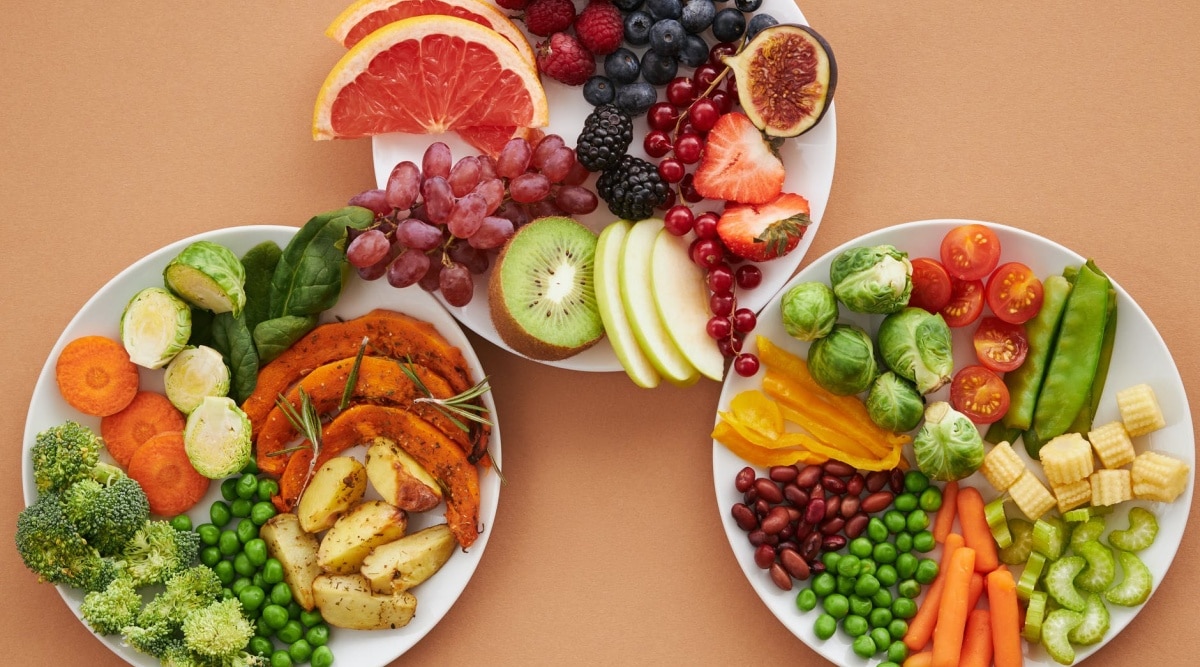“Eat less non-vegetarian food at this age.”
“Do you still need strength training at this age?”
These are some common suggestions given to middle-aged people. Consequently, some people begin to eliminate Nutritive food groups of their daily diet without consulting a nutritionist or do not bother at all and eat whatever they want without evaluating the health outcome. Life at age 50 can be challenging. These challenges are exacerbated for postmenopausal women due to hormonal changes.
After 50, many people find it difficult to maintain a healthy weight. Aging makes it more difficult to lose excess body fat. Sedentary lifestyle, metabolic changes and poor diets are some of the factors that contribute to weight gain. In an effort to maintain a healthy body weight, many people eliminate a number of food groups from their diet, which unfortunately leads to nutritional deficiencies, muscle loss, sleep disturbances, fatigue, and weakness.
This column explores six easy ways to promote a healthy weight and tips for staying fit at any age, even in your 50s.
Know your numbers: Body mass index (BMI) may not be an ideal method of determining if you are overweight or obese when you are 50 years old. The National Institutes of Health recommends that older adults keep their BMI between 25 and 27, rather than less than 25. NIH recommends keeping a BMI greater than 25 to prevent bone thinning. Keep track of your body weight with a digital scale to avoid excessive weight gain. Your waist circumference is another important indicator of your health. Both men and women accumulate abdominal fat as they reach middle age. An excess of abdominal fat increases the risk of non-communicable diseases such as type 2 diabetes and cardiovascular diseases. At age 50, you should have an annual or semi-annual health checkup to stay informed of your general health status.
Combine workouts: regular physical activity it is recommended for everyone. in your 50s, strength training It is more important to prevent sarcopenia, a process in which muscle mass decreases. It is estimated that his muscle mass decreases 1-2% per year after age 50, while muscle strength decreases 1.5-5% per year. Adding strength training to your daily exercise routine is crucial to reducing your risk of sarcopenia as you age. In addition, it helps reduce body fat and increases metabolism to keep you in better shape. Cardiovascular exercises, such as brisk walking or jogging, can also help increase endurance.
Focus on what you eat and how much: Consume nutrient-rich foods. Weight loss often requires a calorie deficit, but not all calories are created equal, so what you eat is more important than the amount. At age 50, nutritional needs change due to reduced calorie intake, medications, chronic health conditions, loss of muscle mass, and more.

Fill your plate with whole foods that will keep you full longer: Nuts, seeds, lean protein, whole grains, legumes, probiotics, vegetables, green leafy vegetables, low sugar fruits, etc. Increase your protein intake to prevent age-related muscle loss and promote healthy weight loss. in a study 2018To help older people maintain muscle mass, resistance exercise and high-protein diets have been recommended. Significant improvements in muscular strength, muscular endurance, aerobic capacity, markers of balance and functional capacity, and various markers of health were observed in all groups. The researchers found that older women who participated in a resistance exercise program with a high-protein diet tended to lose more weight than those who ate a high-carbohydrate diet.
Avoid high-carbohydrate foods, refined sugar, and sugar-sweetened beverages, as they provide empty calories and minimal nutrition. A diet rich in calories and carbohydrates in old age increases the risk of multiple non-communicable diseases related to diet, such as type 2 diabetes, hypertension, obesity, etc.
Move more: ‘Sitting is the new smoking.’ Find ways to increase your non-exercise activity thermogenesis or NEAT. Physical movement that is not planned exercise or sport (or sleeping, breathing, and eating) qualifies as NEAT. Sometimes called physical activity without exercise or NEPA. NEAT can be achieved by cooking, shopping, dusting, walking the dog, walking while on call, taking a stretch break every hour, etc. These activities add to your total daily activity and help increase your metabolism.
sleep soundly: Research shows that not getting enough sleep is one of the biggest obstacles to your weight loss efforts. In fact, long-term sleep deprivation can lead to obesity too. Try to ensure 7 to 9 hours of quality sleep per night by avoiding gadgets or electronic devices before bed, minimizing light in your bedroom, and avoiding spicy foods or caffeine just before bed.
In one word – As we age, we should focus on lifestyle, changing one habit at a time. Aging is inevitable, but it is up to us how we age and keep our productivity high. It may seem like eating well, sleeping well, and exercising are regular things, but they are factors for good health and optimal performance.
📣 For more lifestyle news, follow us on Instagram | Twitter | Facebook And don’t miss the latest updates!
!function(f,b,e,v,n,t,s)
{if(f.fbq)return;n=f.fbq=function(){n.callMethod?
n.callMethod.apply(n,arguments):n.queue.push(arguments)};
if(!f._fbq)f._fbq=n;n.push=n;n.loaded=!0;n.version=’2.0′;
n.queue=[];t=b.createElement(e);t.async=!0;
t.src=v;s=b.getElementsByTagName(e)[0];
s.parentNode.insertBefore(t,s)}(window, document,’script’,
‘https://connect.facebook.net/en_US/fbevents.js’);
fbq(‘init’, ‘444470064056909’);
fbq(‘track’, ‘PageView’);
.